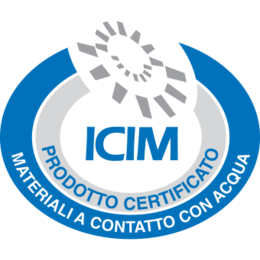HYDROSTATION
Hydrostation is the new IE5 efficiency class electronic system for constant pressure…
PRA peripheral pump with cast iron pump body and motor bracket, also available in the nickel-plated version (PRN 0.50 single-phase). Practical, compact and easily transportable. Read more


| Flow rate | from 0.3 to 4.2 m³/h |
| Total head | from 12 to 88 m |
| Max. working pressure | 6 bar PRA/PRN 0.50 7.5 bar PRA 0.80 12 bar for the rest of the range |
| Max. temperature of the liquid | +80°C |
| Poles | 2 |
| Insulation class | F |
| Protection degree | IP44 |
| Voltage | Single-phase 1~230V ±10% Three-phase 3~230/400V ±10% |
| Pump body | Cast iron Nickel-plated cast iron for PRN |
| Impeller | Brass |
| Shaft | AVZ for PRA 0.50 AISI 303 (EN 1.4305) for the rest of the range |
| Mechanical seal | Carbon/Ceramic/NBR (standard) |
| Motor support | Cast iron |
Can I extend the PRA pump's power cord without causing technical problems or affecting the warranty?
Yes, anyhow this operation has to be carried out by a specialised technician or at an authorised EBARA Service Centre. This avoids improper connections that can adversely affect the pump’s correct operation and/or the safety of the installation.
Is the PRA peripheral pump self-priming?
No, it’s a peripheral pump with an impeller that can operate when there is air or gas.
What kind of liquid can I pump with the PRA pump?
PRA pump can pump the following liquids: clean water (including for drinking purposes), clean liquids in general and non-aggressive liquids.
Which are the applications the PRA pump can be used for?
The PRA pump is typically suitable for domestic uses and for boiler supply.
What is the noise level of the PRA peripheral pump?
The noise level of the PRA centrifugal pump is within the 70 – 73 dB range at a one metre distance, depending on the size and the model.
I own/bought a PRA pump. The pump struggles to start, what can I do?
Insert a flathead screwdriver through the fan cover in the area that is behind the pump, until it coincides with the cut at the end of the rotor’s shaft.
To unblock the pump and make the start-up smoother, turn the screwdriver in both directions for a couple of complete turns.
I own/bought a PRA pump, how do I carry out the first start-up properly?
The first start-up requires the following operations:
Please make sure that there is nothing blocking the dip tube’s foot valve. Once these steps have been carried out, turn the switch on and off two or three times in order to check the pump’s operating conditions and its direction of rotation. Then start its continuous operation and gradually open the delivery gate. Please always refer to user and maintenance manual.
How do I check the pump's direction of rotation PRA?
Contact us
* Required